You may have heard rumblings lately about things that are happening in dusty old Gerlach, where the pavement ends and the West begins (the pavement doesn’t really end here, but more about that another time).
Of course there is lots of talk and activity about the upcoming Rogue Burn, or Plan B, or the Non Event, or whatever else you want to call the thing that is happening in the Black Rock Desert next week, instead of the actual Burning Man event, which is not actually happening this year.
But no, we are not talking about that. We are talking about other people who have been showing up in town, some of whom are wearing DPW hoodies, or Black Rock Ranger shirts, or carrying radios. A lot of them have official-looking laminates around their necks that read: “Hot Gerlach Summer”.
We can reliably report that no one needs to point out that Gerlach is indeed hot during the summer. But the temperatures have been moderate of late, as the sun futilely tries to burn its way through an orange haze of wildfire smoke. Air quality varies, with AQI readings around 50 on good days, around 150 on average days, and 300 or more on crappy days. Sometimes you can’t tell if it’s the sun or the moon in the sky, because around sunset or moonrise, they have about the same faint luminosity.
But the new people are still showing up at Bruno’s or Joe’s or the Miner’s Club, and they’re out behind the old Gerlach Hotel, which is now called The Oasis, and they’re enjoying pizza and kale salad and snow cones at the new little plaza there, and they’re checking out the murals on the side of the hotel.
All of which might justifiably lead you to wonder, what the hell?
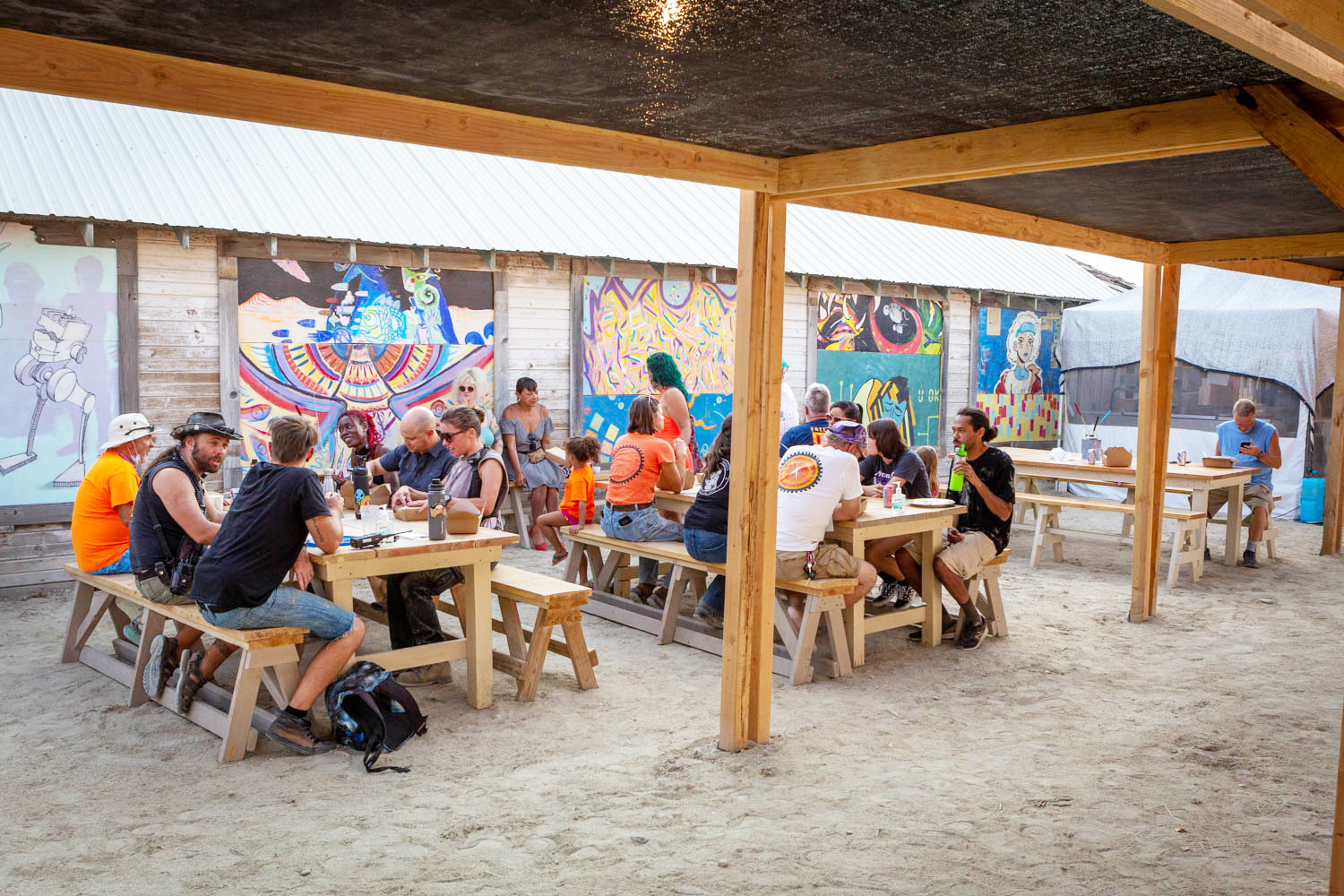
A group of people are milling around one of Gregg Fleishman’s wood sculptures in the middle of a circular plaza that has been carved out of the playa just outside of Gerlach, right off County Highway 34, on the way to the Black Rock Desert. A line of Spires line the road, and at night the sculpture glows from within, lit by multicolored solar lights. In the daytime it isn’t the worst place to hang out, because there’s a hammock inside and the sun’s rays are blocked nicely.
You may have seen Fleishman’s work before. He built the “Temple of Whollyness” in 2013, and the “Otic Oasis,” way out in the walk-in camping portion of the playa, in 2011. Now some of his pieces are on loan at what has become known as the 360, a piece of land that Burning Man Project owns just outside of town.
The two-year break between Burning Man events has given the organization time to step back, take a breath, and examine more closely its mission — to spread Burning Man culture into the world. The organization has also been looking at what’s happening, and what’s not happening, in Gerlach and environs. This has led to a burst of activity and resources aimed at the 360.
The plan is for the land to be developed into a maker space for artists, theme camp organizers and mutant vehicle owners, plus storage space for containers. There will be other things, too, if all goes well, including a 100-acre sculpture park that will provide a glimpse of what Burning Man is like to the Burner-curious who pass through Gerlach.
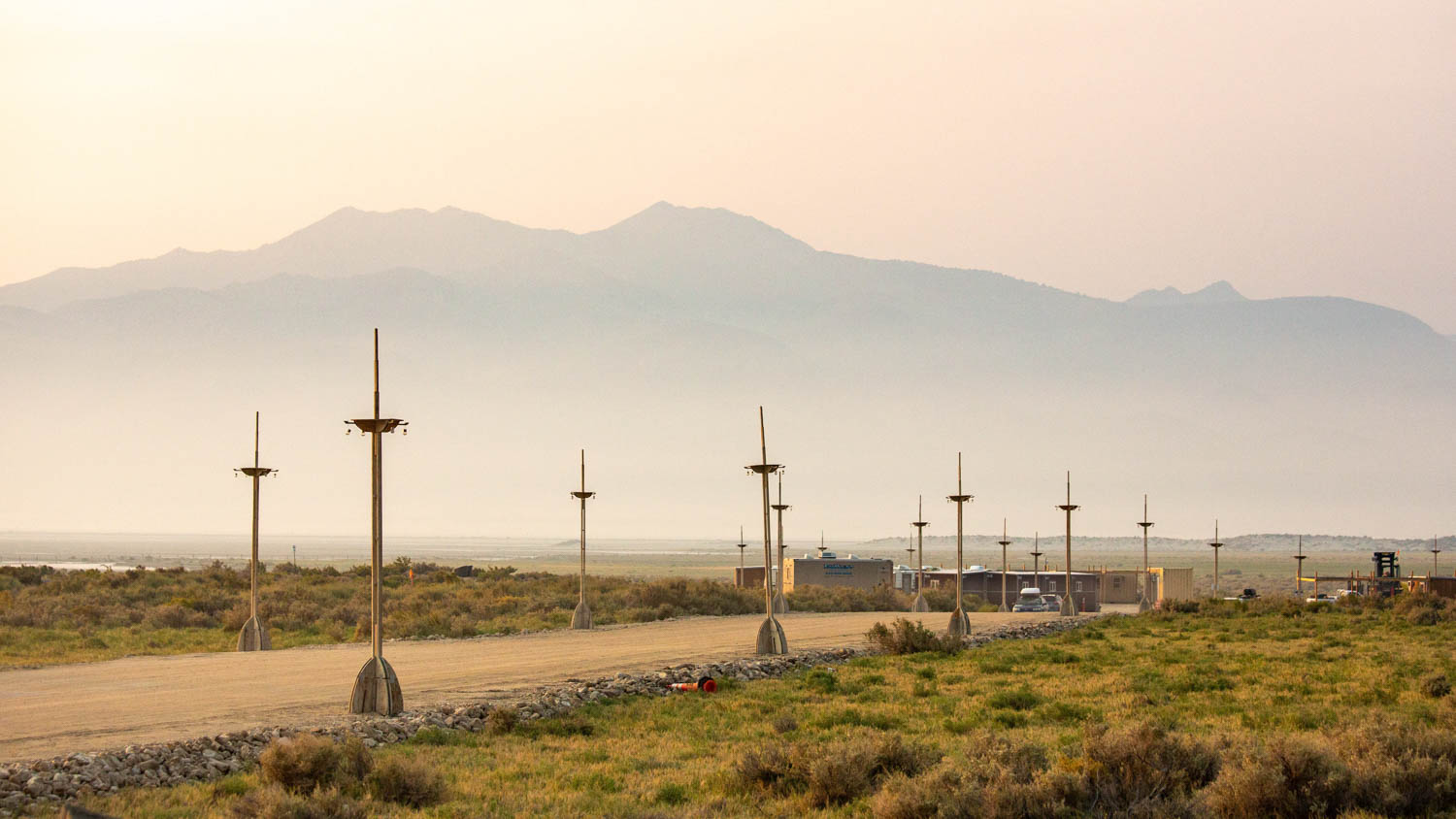
Now, about 40 makers and artists and other visitors have gathered in the center of what is being called Coyote Circle. Maybe the most amazing thing is the simple fact that right here where they are standing, surrounded by containers, generators, shade structures, kitchen utilities and art … there was nothing but desert scrub brush only a couple of months ago.
This is the second of what are being called Trailblaze weekends, where groups of people are invited to come and stay at the 360 for a few days, listen to the plans, and offer feedback and advice. The participants are getting a sneak peek at the future, and they’re being asked to have a hand in shaping it.
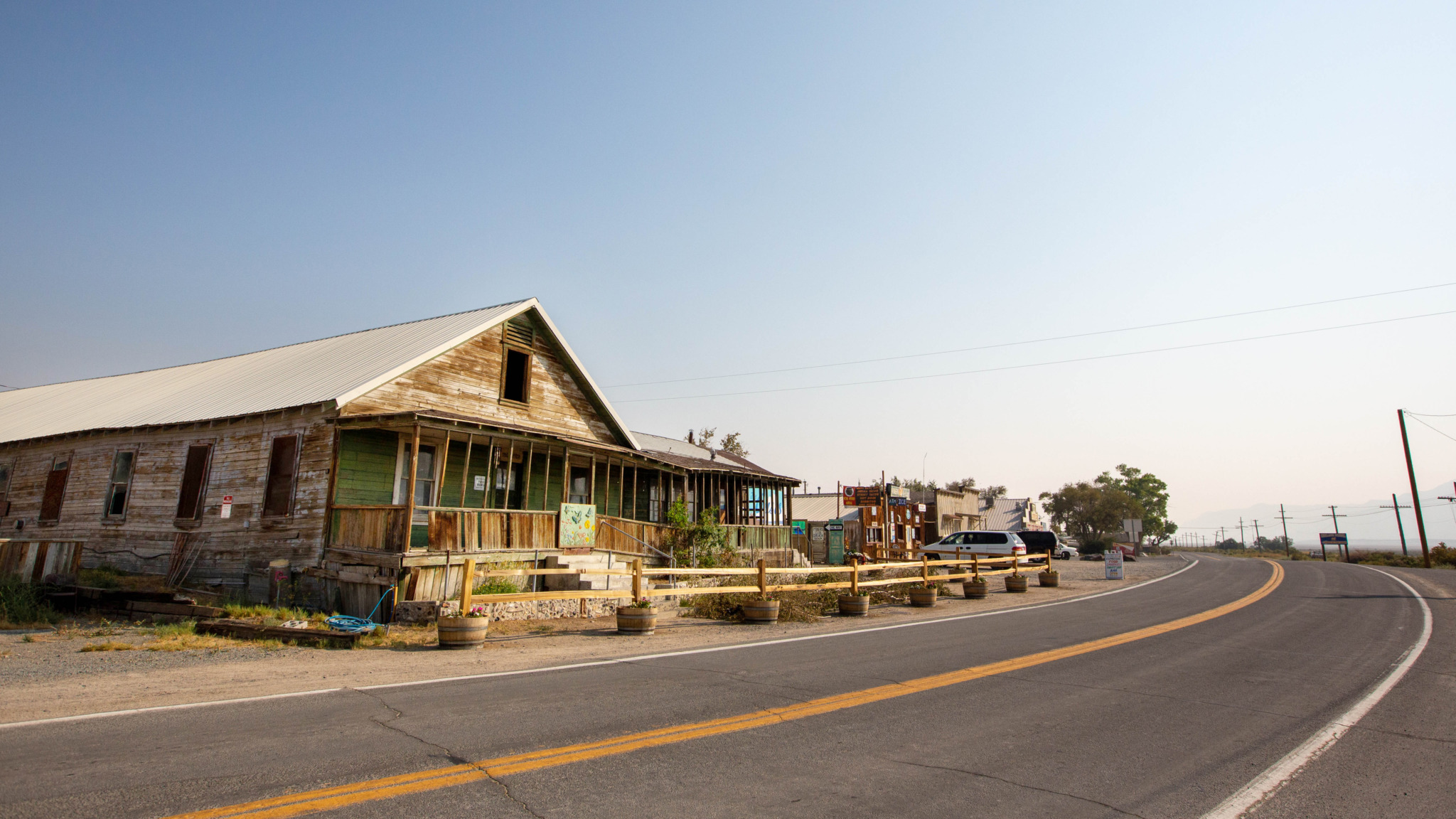
The weekends’ facilitator is Sting Rae, a longtime Burner who has spent her summer in Gerlach, keeping staffers and volunteers motivated, and getting ready for moments like these. “Sometimes people are jealous that I’ve been going to the Burn for 24 years,” she tells the Trailblazers, “and they say, ‘I just wish I could have been there at the beginning.’ …I really feel like this is that next moment in time. … It’s that next line in the sand, where we’re all gonna step over, and the world (becomes) a different place. Years from now, we’re all going to be looking out at this amazing complex, at the 360, and remember that we were all here together at the beginning.”
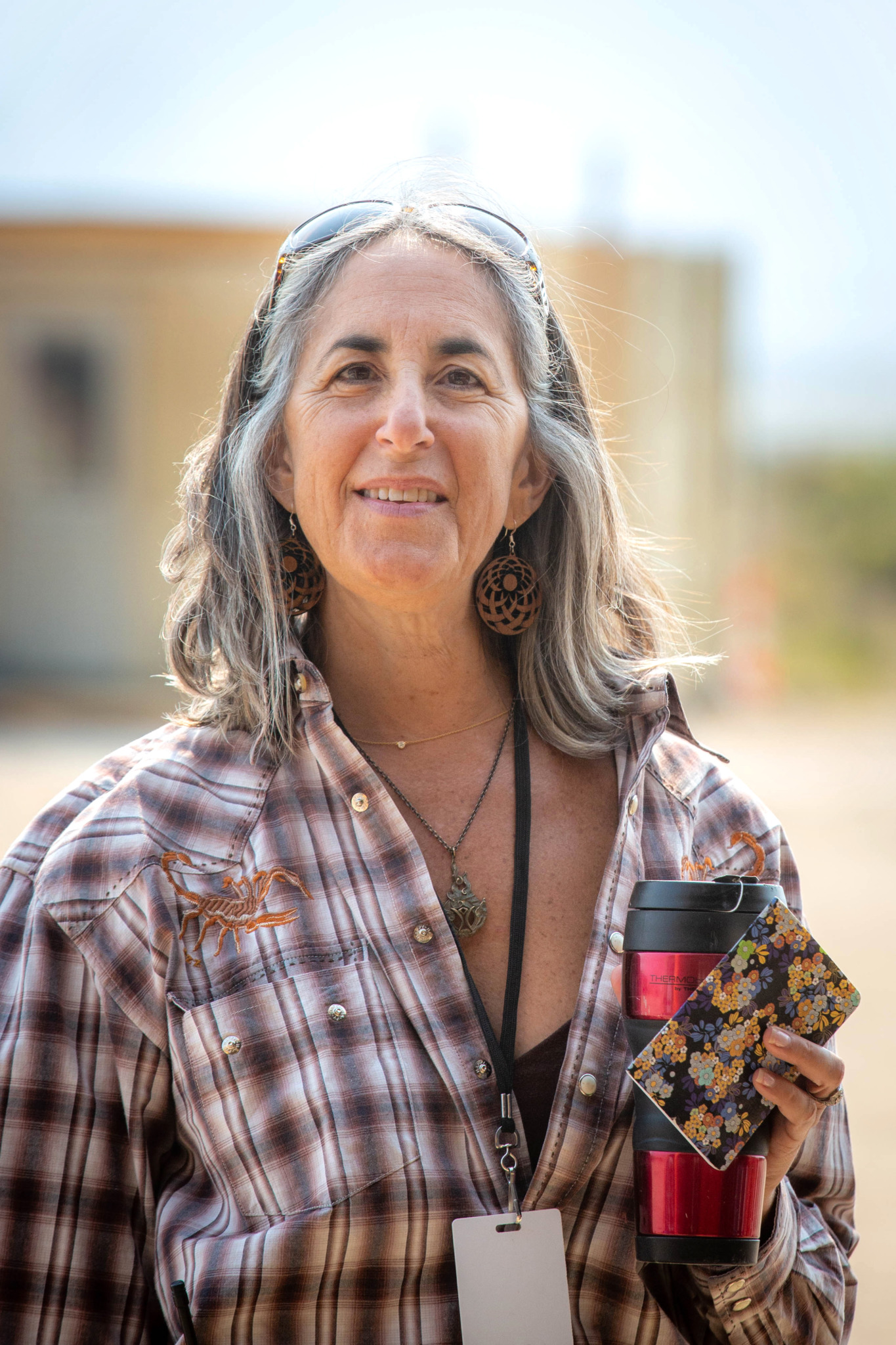
It’s no secret that Burning Man Project, over the years, has acquired properties in and around Gerlach, in addition to the high-profile acquisition of Fly Ranch five years ago. But so far, the spaces in town have been used primarily to house and feed the workers who come and build Black Rock City, stick around afterwards to wrap things up, then leave. As the event has gotten bigger, so has the need for seasonal support staff. And all those folks need to bunk someplace, and they need to eat someplace, and they need a place to park their cars and trucks and trailers, at least until everyone moves out to the playa and then goes back to where they came from.
And that’s largely why a lot of what Burning Man Project owns in town stays shuttered for most of the year: The properties get used during the crush to build Black Rock City, but they’re empty the rest of the time.
Has this had a good effect on the town? It has not. Has it improved relations with people who’ve lived in Gerlach for years and years? It has not. And has it helped the organization achieve its sustainability goals? Again, it has not.
“If you’re honest about how you measure sustainability,” Matthew “Chef” Kwatinetz is saying, “the biggest impact of Black Rock City is transportation.” Chef is a board member of the Burning Man Project, and he’s also the senior director of real estate.
“(There’s a) lot of freight transportation, and a lot of passenger transportation. One of the things you can do (to address) that is move things closer. … The biggest thing we could do to affect our environmental impact is to move those containers closer.”
So instead of having to ship theme camp containers and art cars from New York or Chicago or Vancouver, imagine being able to store them close to the playa. And imagine teams of people being able to come out and work on them during the year. And imagine those people benefiting from the knowledge that they could share with each other.
Mark Zimmerman brings his art car from Michigan and stays at a camp with other people from the Midwest who make the long trek to Black Rock City. “If I spend $10,000 to build the car, it might cost another $10,000 to transport it and store it. I can’t upgrade the lights or the sound, I have to pay to get it back and forth.” So he supports the 360 idea? “Hell yeah. … And if there’s something I don’t know how to do, there might be somebody here to ask, instead of having to look at YouTube videos for hours.”
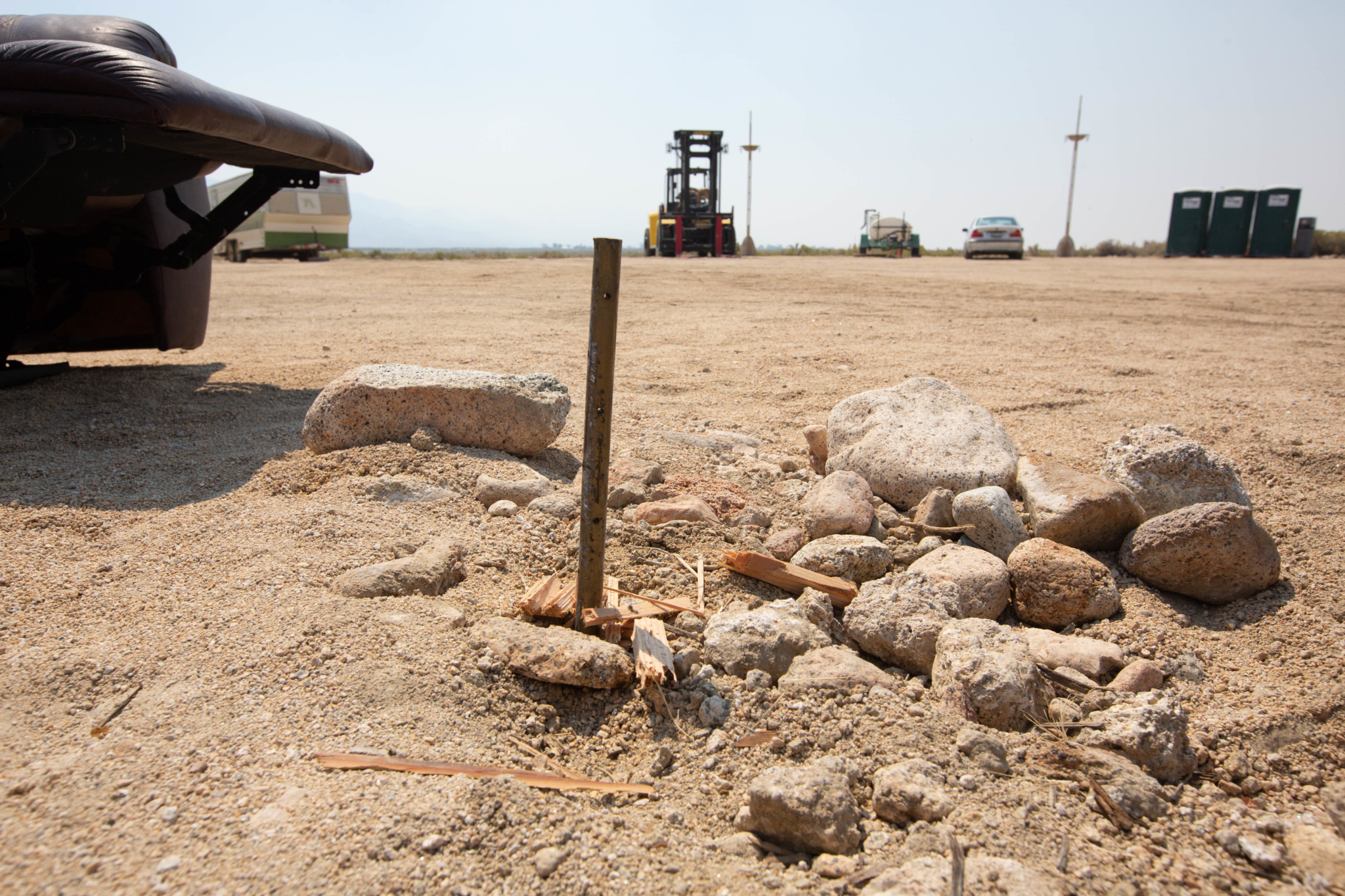
Back in July, a team came out to survey the 360, and there was a ceremony held when it was finished. About 40 people took part, including Burning Man Project CEO Marian Goodell, co-founders Will Roger and Crimson Rose, Chef, Coyote (Black Rock City’s Superintendent and the man who kicks off the build season with the Golden Spike ceremony), the survey team, year-round Burning Man workers, plus more than a few local interested residents. They took turns hammering a Golden Spike into the ground, just like what happens for the Burning Man event itself, marking the spot where the Man will be built. But this time was different.
“Coyote kind of teared up a little when he (drove the spike)” Chef said, “because he said, ‘I’ve been doing this for 30 years, and this is the first time we’re not pulling the spike OUT.’”
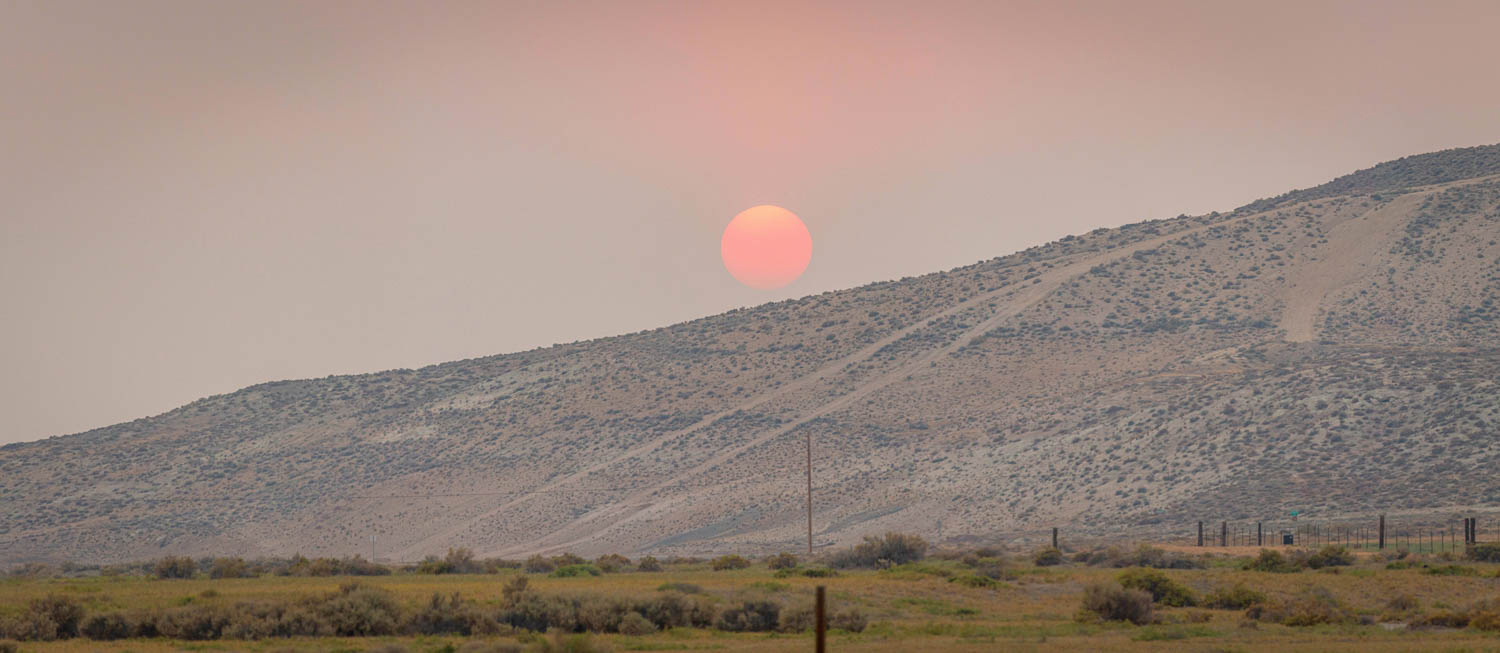
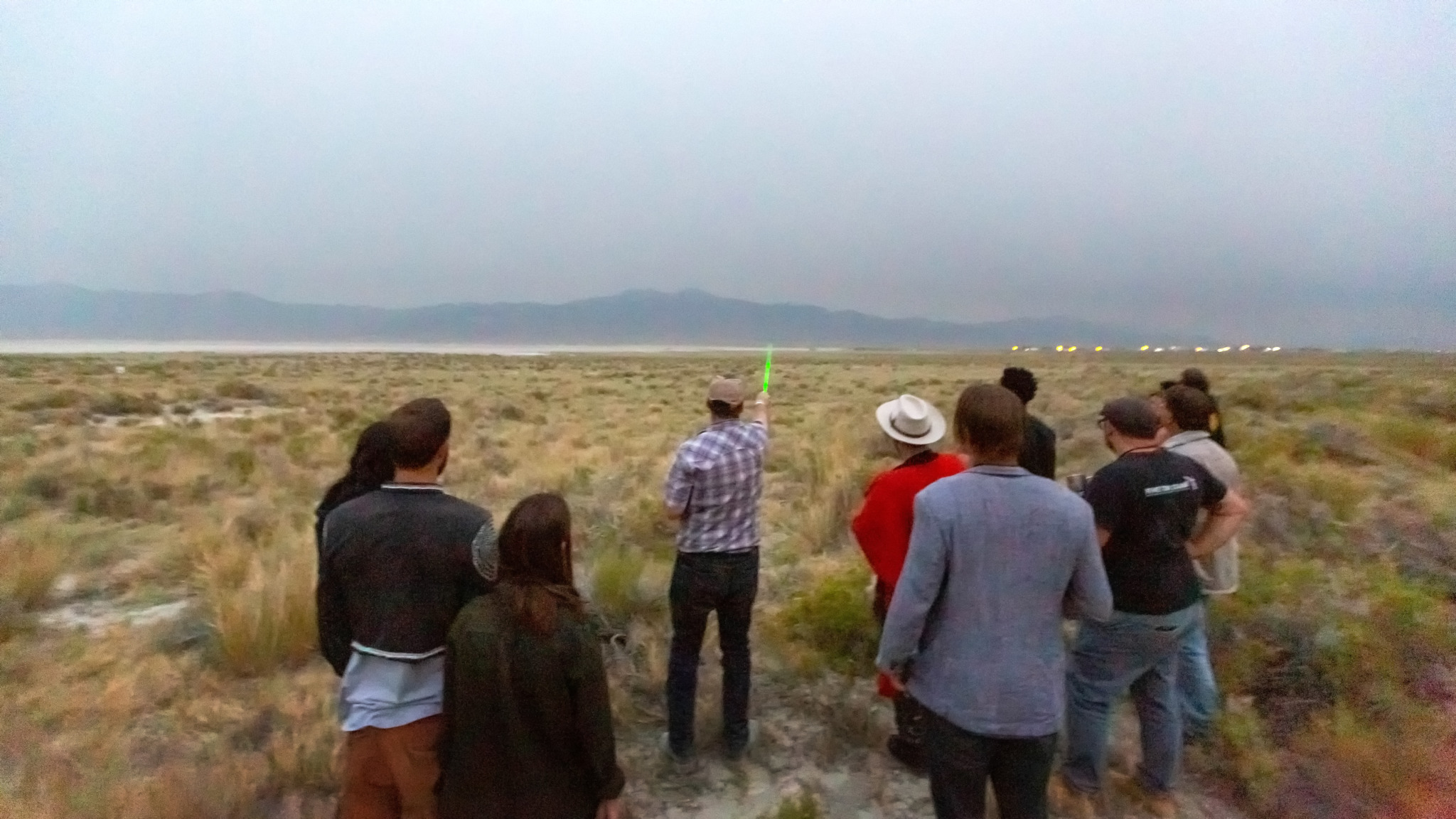
Conventional wisdom has the locals resistant and skeptical of the changes Burning Man Project might bring to the Wild West cowboy town of Gerlach. The people from the big city are going to do things their way, and they will never understand what Gerlach is, has always been, and will always be.
But that might be a false narrative.
To a greater and greater extent, there is less of a “them” in Gerlach, and more of a collective “us.” Census and survey numbers are not the most reliable here, but estimates are that about 30 percent of the approximate 200 people who live in Gerlach work or have worked for Burning Man Project. “When people from SF come and say, what do the locals say,” Chef says, “I’m like, we are the town. You sound so distant and weird.
“Up until about a year and a half ago, nothing was able to be manifested of those plans. Why? The organization is built to run a huge event every year. It’s hard to just pivot and do something different. And there was a lot of concern from a lot of places that we were outsiders here.
“I’m not based out of California, I’m based here. I’m the third board member [who lives] here.” (Will and Crimson are the other two.)
“One of the things we’ve done is asked ourselves, if we’re going to keep having these properties, what does it look like for us to both achieve our mission, and be appropriate participants here, as opposed to outsiders from San Francisco.”
Plans are plans. Theories are theories. Talk is talk, and talk is cheap, right? Still, many people here in the Gerlach area, and for that matter in the funding world, have heard a lot about Burning Man Project’s plans before.
“You aim high like this,” Chef says, “and one of three things happens: Either nobody believes you, or everybody believes too much, (or) everybody believes they can do it better.”
We are walking from property to property along Gerlach’s Main Street. For every open business, there is one in between that is shuttered. Not falling into ruin, just … closed. Inactive. Waiting.
One of the people walking with us is Karen, who runs the 5,000-acre Empire Farms hay operation. She’s had plenty of questions for Chef, and he’s had plenty of answers. She seems a bit weary with it all, and yes, skeptical, but at the end of the walk, she says, “He’s the first one I’ve seen turn a rock over.”
There are still plenty of rocks to turn over. But it would seem more and more of them are being pushed out of the way.
“In town, people would say to me, ‘Yeah, we’ve heard this before,’” Chef says. “Now, I have people coming up to me every day, like, ‘How can I help? Where do I plug in?’ We’ll see how long it lasts.”
Cover image of some of the Trailblaze weekend participants, 2021 (All photos by John Curley)

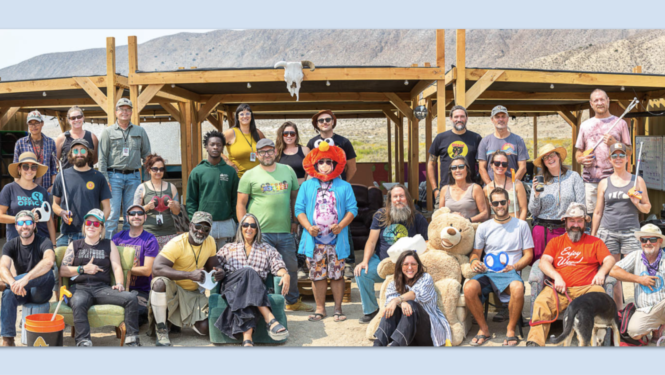
Wow! Not only an artist -a writer-great article
Report comment
Thanks for reading, I’m glad you liked!
Report comment
Curley, when are you writing a book? If Coyote can do it you certainly can!
Report comment
Someday!
Report comment
Is there anywhere on 360 to land an ultralight aircraft?
Report comment
I’m not the person to ask, but I’d say no.
Report comment
Thank you for a well researched, informative, and well written article. You’ve presented some perspectives to Gerlach culture that I’ve never considered, and I feel a genuine thoughtfulness from you.
Report comment
That’s very kind, and thank you for reading
Report comment
Beautiful update on the Gerlach goings-on. Thanks Headshot!
Report comment
<3
Report comment
Just curious about the numbers of cargo containers that are going to be stored at the 360 site. It’s a wide open area with low vegetation visible from all directions at the edge of the playa and just north of Gerlach. I hope it doesn’t end up looking like the Port of Long Beach!
Report comment
I’m not certain of the final number, but there ARE plans to mitigate the visual impact by placing them on the lowest portion of the site, and perhaps behind a berm.
Report comment
Thanks!
Report comment
Thanks for this , well written as usual . I have been fielding questions about this . This article certainly helps.The clear communication is such an asset of its own .
sincerely ,
cLovis
Report comment
thank you!
Report comment
Seems like a nice nest for an artist-in-residency program that could stretch longer than the standard single month, maybe a couple, with some overlap to create a sense of familial presence, so there’d be more than one at the same time…
Report comment
Yes, agreed, that’d be a great addition.`
Report comment
Wonderfully written and photographed as always! Giving me major FOMO over here in Denver!
Report comment
Aw dang, miss your face, thanks for the note!
Report comment
The standard of American growth is “opposition of the NIMBYs” and it’s certainly one of the constants that’s been part of the BM story in Gerlach and nearby Empire. Affluence, mobility (social and literal), mores, values; these are the foundations from which separation walls are constructed between groups of people, typically from misunderstanding. After 30 years of eyeball to eyeball interactions, no one could mistake the genuine love of place, appreciation of fragility in the ecosystem, respect for those who have been there long before, and, hopefully, embrace of those who didn’t come to change but rather to simply “be.” One of the most hopeful and helpful ways to break down barriers, to lower walls, is explained in this 360 project. Now with a third of the year round population being part of BM, there’s increasingly less “them” and more “us.” Thank you for showing conservative (not political, simply those who are averse to change) and rugged Westerners that even though “We” might look different, We are just trying to make the world a better place. On that, surely, agreement and consensus can be forged. Thanks so much for this hopeful future.
Report comment
thank you for your thoughts.
Report comment
Can’t wait until I get there later this month.
Report comment
be careful, slow down, have fun, bring a bucket
Report comment
As a long time burner and rancher in rural CA. Please understand that its one thing to have the support of Gerlach where the community will see direct benefit. Just as important is the surrounding ranching community who is impacted without direct benefit. Frankly that surrounding ranching community need not support your plans. However if they oppose your plans you’ll most likely find county government less then agreeable. And yes l see that efforts are being made to include the ranching community.
Report comment
I hope those efforts at reaching out to the ranching community are successful.
Report comment
As always, good honest writing from an inside source!
Thank you John!
Report comment
thank you for reading!
Report comment
How can I go and be one of the participants?
I’ve been to BM 13 years, not in a row, first started in 2001, and did fire conclave for many.
Report comment
I’d contact the Burning Man Project directly.
Report comment
This is beyond informative. It’s inspiring. My son has worked on the Playa for @a decade. Live the 10 principles year round. Lives at Arcosanti year round to keep the values he embraces into his “outside life”. Y’all have a great thing going. The world needs the shift BM offers. Great writing.
Report comment
Thanks John for your sharing and nice to hear about 360 :D
Report comment
Hello John…
Thank you for the explanation and photographic documentation. Assimilation has taken the Burner community thirty years to achieve some success with the Washoe County locals. Let us hope for sustained engagement and fruitful relationships.
The next time you drive from the San Mateo coast to the Golden Gate Bridge through Land’s End, stop by to visit The Little Art Museum sitting out in the garden on Clement. It’s roots are in Burning Man going back to 1987 at the beach down the hill around the corner.
Report comment
Comments are closed.